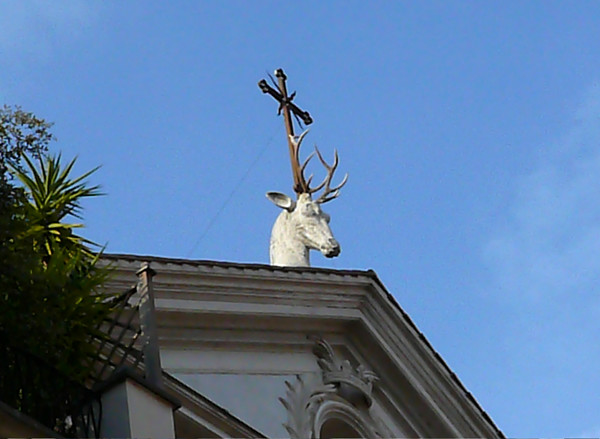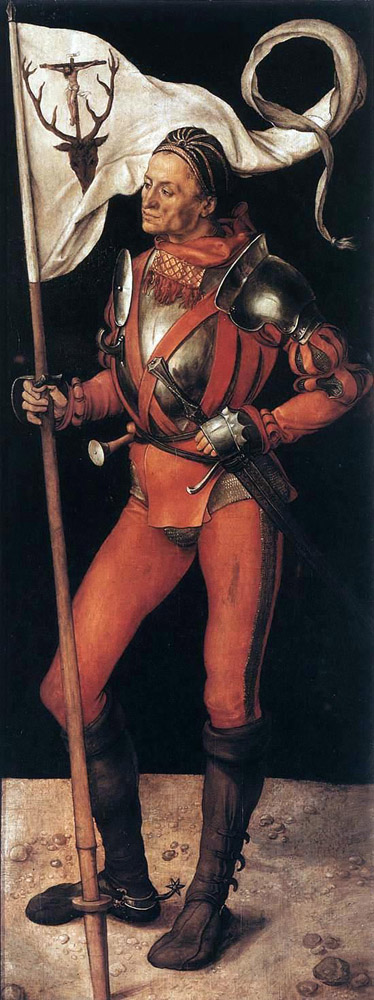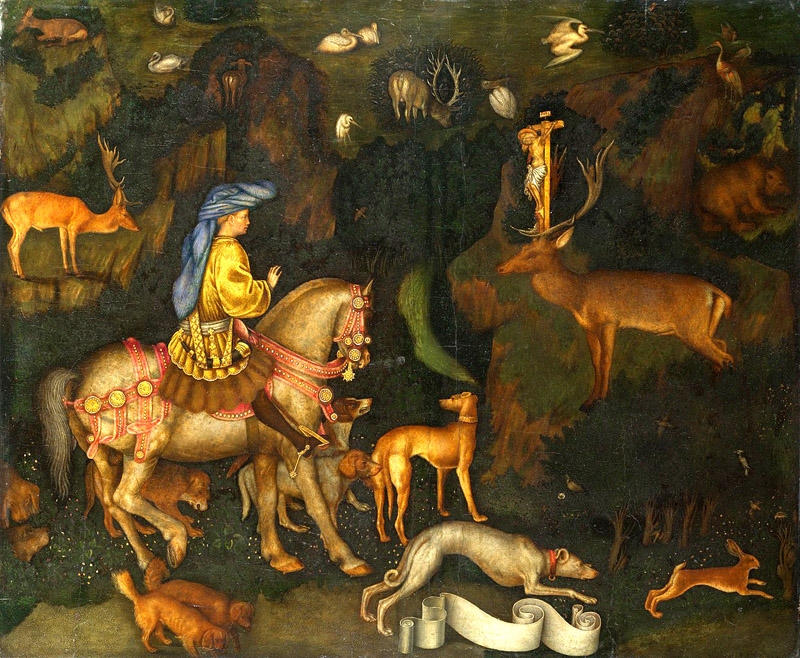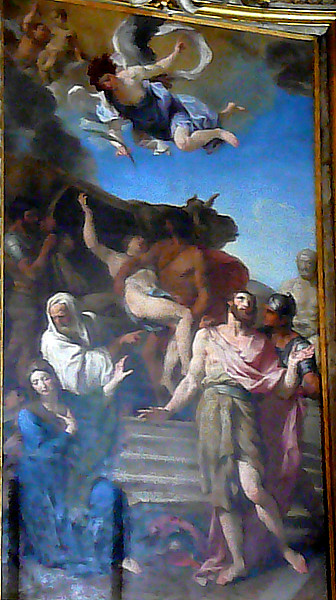
In the 15th century Eustace was one of the 14 Holy Helpers of popular devotion.
Prepared in 2014 by Richard Stracke, Emeritus Professor of English, Augusta University, revised 2015-11-02.
HOME PAGE

Detail from Albrecht Dürer's Paumgartner Altarpiece (See the description page)

Pisanello, The Vision of St. Eustace (See the description page)

Francesco Ferdinandi, The Martyrdom of St. Eustace (See the description page)
ATTRIBUTE
- Deer with a cross in its antlers
DATES
- Lived in the 2nd century
- In 1969 the Roman Catholic Church suppressed his September 20 feast.
MORE IMAGES
- 1466-67: The Pollaiolos' St. Vincent, St. James the Greater, and St. Eustace gives Eustace a palm branch and youthful countenance, but nothing to identify him more precisely.
- 1500-1504: St. Eustace is in this statuary group from Riemenschneider's set of portraits of the Fourteen Holy Helpers.
- Beginning of the 18th century: The church of "San Stae" ("St. Eustace" in Venetian) has a painting with Eustace and the stag and a series of paintings in the sacristy on the life of St. Eustace, including his meeting with the Emperor Trajan, his refusal to worship idols, and his imprisonment.
NAMES
- In Latin, "Eustachius," whence the French "Eustache"
- In Venetian, "San Stae," the name of one of the city's most elegant churches.
BIOGRAPHY
- Golden Legend #161: html or pdf
- "Life of St. Eustas" in the Early South English Legendary, 393-402
- Roman Breviary: English translation, IV, 573-74; Latin original, 1042.
- Acta Sanctorum, September vol. 6, 106-137.